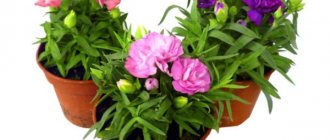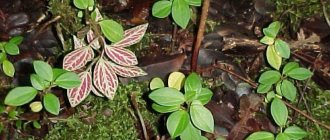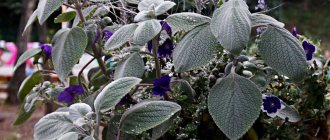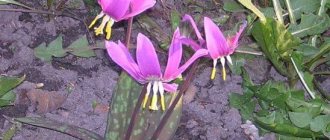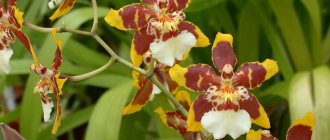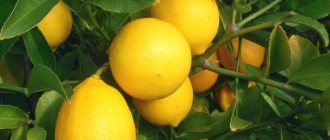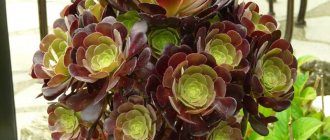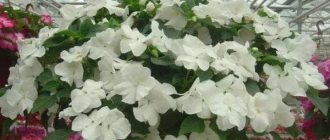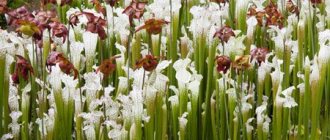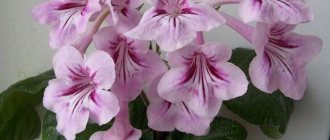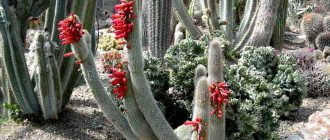The genus Schefflera (Schefflera) from the Araliaceae family has about 600 proven species, including evergreen trees, shrubs, vines, and is widespread in the tropical zone. For lovers of indoor flowers, its representatives may be known under the names Brassaia, Dizygoteca, umbrella tree or octopus.
In culture, the most popular species belonging to the genus Schefflera are: Tree-like, Radiant-leaved, Elegant, Eight-leafed, Palmate. The last two have undergone few changes as potted plants; the rest have given rise to interesting varieties.
Types of shefflera - description
There are more than two hundred species of Schefflera in the world. We list the most common varieties.
- Schefflera arborescens (or Arboricola) is a small, upright tree with light green leaves that can reach up to 20 cm in length. It can produce inflorescences unlike other plants in its family.
- Schefflera palmata is a low-growing plant with large, pointed, seven-lobed leaves. There are variegated representatives.
- Schefflera octophylla is a tree with pale green oblong leaves. It justifies its name by the fact that each leaf blade is divided into 8 parts.
- Schefflera Gold Capella is an ornamental tree similar to a palm tree with a smooth trunk. With careful care it can reach more than 1 m in height. It stands out with bright pistachio-colored foliage.
- Schefflera Nora is a flower with narrow, long leaves of bright olive color with golden spots. On the edges of the leaves you can see teeth, giving the plant an elegant look.
Schefflera Janine - distinguished by a dark green lush crown. Does well in the shade.
Schefflera Gerda is a lover of diffused light and high humidity; she grows taller than a human. The foliage has a variegated color.
- Schefflera Louisiana - the most graceful representative of its family, has lacy, thick, shiny leaves with a variegated green and yellow tint.
- Schefflera Bianca - a distinctive feature of this flower is that it has fairly short leaves. Each leaf is bordered by a white stripe and teeth, and also has light inclusions.
- Schefflera Caster is a small decorative flower with dark green foliage.
- Schefflera starifolia (or schefflera radifolia) is the most popular type of plant. It has a lush crown consisting of leathery, glossy, dark-colored leaves with jagged edges. Radiate blooms with small scarlet inflorescences.
- Schefflera Mundrop is the shortest variety of the plant. It has several trunks with palmate variegated leaves located on them.
Schefflera Amate is an ideal choice for apartments with windows facing north. In addition to shade tolerance, the tree has enviable resistance to various insect pests and diseases. The leaves of Schefflera Amate are large in size and have a deep emerald color.
Schefflera Melanie - has a luxurious crown with large, faded green leaves. It has an unpretentious character and is great for beginners in floriculture.
Types and varieties
The following types are used in indoor floriculture:
- eight leaf;
- radiate;
- tree-like;
- palmate.
Based on these species, breeders have developed new varieties of shefflera, which we will consider a little below.
Eight leaf
The plant got its name from the number of leaf blades, which ranges from eight to twelve. The leaves are lanceolate, pointed at the apex. Their length reaches 30-40 centimeters, and their width is about ten. The leathery leaves have several shades of green, and the veins on them are light cream.
Radifolia
Due to the shape of the leaf plate, it is also called star-leaved. You can recognize it by the number of leaves extending from the red-brown petiole. The sixteen leaves are ovoid at first. As the plant grows, they become longer, but remain blunt at the ends. Their length is fifteen centimeters and their width is five. The bright green leaves have a shiny leathery surface and light veins. This species is the most popular among gardeners. It is necessary to note the rapid growth of Schefflera radiata. Based on this species, varieties with yellow-green and golden-yellow leaf blades have been bred.
Tree-like
The plant is a tree that grows up to 1.2 m, with shoots extending from a straight trunk. This species is native to Southeast Asia. The number of leaves located on long petioles ranges from seven to sixteen. The leaves, which are up to fifteen centimeters long, reach eight centimeters in width. The size and shade of the leaves may vary depending on the variety.
Palmate
The homeland of palmate schefflera is New Zealand. In its homeland, the tree grows up to eight meters and resembles a palm tree. Eight ellipsoid-shaped leaves are on long petioles reaching twenty centimeters. The length of the leaves ranges from fifteen to thirty centimeters. It differs from the radiate species in its compactness.
This may be interesting: Yucca - home care
Janine
Schefflera Janine stands out for its variegated foliage. Light dots and streaks are scattered on the dark green background of the leaves. This variety is distinguished by the fact that it tolerates shading well and does not lose its variegated color.
Nora
The Nora variety is variegated. Narrow green leaves are covered with yellow specks. The edge of the leaves is framed with teeth. Schefflera Nora is distinguished by its unpretentiousness and lush crown.
Gold Capella
The variety was bred on the basis of the tree-like Schefflera. The tree has a lush crown with bright green leaves covered with golden spots.
Gerda
The Gerda variety prefers diffused light, moisture and fertile soil. The leaves of the plant are variegated, yellow-green in color. The height of the plant depends on the conditions of detention, and varies from 0.5 to 2.5 meters.
Luzeana
The Luzeana variety is distinguished by openwork leaves with yellow-green streaks. Shiny leathery plates add additional decorativeness.
Bianca
Plants of the Bianchi variety have short leaves, the length of which does not exceed eight centimeters. The leaf blade has denticles along the edge, covered with a white border. Beige spots are visible at the base of the leaves. The variety is decorative due to the shape and color of the leaves.
Custer
This variety, bred by breeders, is more suitable than others for growing in our apartments. The plant does not grow more than 120 centimeters. Its leathery, dark green leaves are medium in size.
Home care
Now let's look at how to properly maintain this flower at home so that it always pleases the eye.
Heptapleurum and Schefflera - differences: Schefflera
very similar to
Heptapleurum
arborea.
But unlike
this relatively compact plant, it has a wider crown and requires maintenance in more spacious rooms.
Schefflera - poisonous or not?
For people, children:
The plant is really poisonous
and can cause irritation of mucous membranes and skin.
are poisonous
; they contain a toxic substance - a glycoside, which causes poisoning.
For cats:
Schefflera
(
poisonous
houseplant
for cats
- whole) - causes irritation of mucous membranes and contact dermatitis.
Euphorbia (these plants are poisonous to cats
because they secrete a milky sap that contains euphorbin,
a toxic
substance) - causes burns, conjunctivitis, inflammation of the mucous membranes, diarrhea, and can cause blindness and nervous disorders.
Temperature
Schefflera does not tolerate low temperatures. The ideal temperature for it is considered to be from 15°C to 22°C.
Important! Never place a flower pot near heating appliances or radiators. Shefflera also reacts poorly to drafts and therefore does not belong on an open window.
Lighting
Due to its tropical origins, good lighting is essential. Variegated varieties especially love a lot of light and will respond to a lack of light by losing their brightness.
Important! In summer, the plant can be taken out into the fresh air, but to avoid leaf burns, you need to create a little shade so that direct sunlight does not damage it.
Air humidity
For effective development of shefflera, you need to regularly spray the plant and remove dust from the leaves with a soft cloth. It is better to use settled or boiled water. In rooms with dry air, it is recommended to place the pot in a tray with damp moss or expanded clay.
How to water a plant
Schefflera is moisture-loving. It needs frequent regular watering with settled warm water. It is necessary to ensure that the moisture in the pot does not stagnate, but the soil should not be allowed to dry out. The watering schedule in summer is every other day; in winter, once a week is enough.
Top dressing
For the beauty and health of the shefflera, it needs to be fed with liquid nutrient mixtures for house plants. The frequency of fertilization is once every 2 weeks.
Important! Dry Schefflere fertilizers are not recommended.
What kind of pot do you need?
Pot
for
shefflera
for transplantation
it should
be of a regular shape - the upper part is wider than the bottom and is approximately 1.25 times tall.
The best material is plastic. For most other plants, baked clay is suitable. But it absorbs and retains moisture, and shefflera
suffers from various rots; the flower tolerates short-term dryness better than excess water.
the shefflers
are replanted, the size of the pot
increases by 2-3 cm. The information that it should be much larger than the old one (by 5-6 cm) is incorrect.
Features of care
In the process of caring for shefflera, and especially during cuttings and transplantation, it is important to be careful. The fact is that all parts of this plant, both aboveground and underground, are poisonous. They can irritate the skin and mucous membranes, so it is better to carry out all work with gloves.
Watering
Moderate and regular watering is the key to successfully growing schefflera indoors. Excessive soil moisture and stagnant water in the pot are dangerous for the plant. It is better to slightly dry the soil than to overdo it with watering. It is necessary to water when the top layer of soil in the pot dries 0.5 - 1 cm. Flower growers note that variegated varieties require less moisture.
Regular and moderate watering is recommended for the plant.
For irrigation, soft, settled water should be used. It should be lukewarm or at room temperature. It is strictly not recommended to water the shefflera with cold tap water. After watering, drain the water from the pan. In winter, watering should be reduced.
Top dressing
During the active growing season, you need to regularly fertilize the Schefflera once every two weeks. A universal fertilizer for indoor plants or a complex fertilizer for vines and evergreen ornamental deciduous plants is suitable as a top dressing.
Universal fertilizer for indoor plants
It is recommended to fertilize only in liquid form, since dry fertilizer in the form of “sticks” can lead to an overdose. It is better to dilute liquid fertilizer in a weaker concentration than recommended by the manufacturer on the packaging.
Pruning and crown formation
Schefflera can be grown in bush form or as a small standard tree. The tree-like shape and neat appearance of the plant is obtained as a result of proper pruning. Incorrectly trimmed schefflera will only do harm.
If one plant is planted in a pot, its flexible stem needs support. In this case, an “artificial trunk” is suitable - a stand braided with coconut fiber. Such a support can be bought at any flower shop. Natural coconut material is excellent for almost all types of plants that need support.
Bonsai formed from Schefflera
Often, several schefflera seedlings are planted in one container, and while their young green stems are still sufficiently flexible, they are intertwined, simultaneously removing all the lower side shoots. The result is an original living interior decoration with a trunk in the form of a pigtail or other unusual shape.
If desired, Schefflera can be formed into a bonsai. Schefflera arborescens is better suited for this than other species. To form a dwarf tree, the usual methods are used: pruning, fixing branches with wire and tension devices, repeated pinching of young shoots. Sometimes it is necessary to remove leaves to encourage the formation of lateral buds.
Growing Schefflera bonsai is a long, labor-intensive and painstaking process that requires patience, experience and certain skills. Since these miniature trees do not produce a lush crown, it is better to plant several plants in one container.
Diseases and pests
Rot. The cause of rot is waterlogging of the soil, drafts or overfeeding with fertilizers. It manifests itself as an abundant shedding of foliage, the plant withers, and dark spots appear on it. To get rid of rot, the sheffler needs to be transplanted into another pot with fresh soil, the damaged roots must be removed, having first treated them in a light pink solution of potassium permanganate.
Infection with spider mites, thrips or scale insects can be determined by the pronounced stickiness of the leaves. In this case, Schefflera is able to get rid of insects on its own by secreting a special juice. You can help the tree by spraying it with a soda solution and wiping the leaves with soapy water with a sponge. Treatment with insecticides will not hurt.
Problems during cultivation
Leaves are falling - why?
There are many reasons for Schefflera leaves to fall off. Therefore, when it begins to lose leaves, it can be difficult to determine the cause. Here are the main reasons why Schefflera leaves fall:
- Incorrect watering regime;
- Temperature too low or high;
- Unsuitable air humidity for the plant.
- Excess feeding;
- Incorrect lighting;
- Presence of pests.
Schefflera sheds leaves in winter, what to do
The falling of plant leaves is most often affected by insufficient humidity. Dry air causes leaves to dry out and fall off. High humidity can cause leaf fall only in combination with abundant watering. This growing regime promotes rotting of flower tissues.
Common reasons why Schefflera sheds its leaves may be the following :
- temperature conditions that are uncomfortable for the plant;
- low air humidity;
- incorrect lighting mode;
- deficiency or excess of mineral components;
- violations of the irrigation regime;
- fungal infection;
- damage by insect pests;
- incorrectly selected container for planting;
- protracted period of adaptation.
Eliminate the causes and the flower will stop shedding leaves in winter.
Diseases, pests and problems of improper care
Schefflera can be damaged by scale insects, aphids and spider mites. Aphids deform and damage young leaves and cause them to turn yellow and fall prematurely. In case of infection, you can spray with soapy water. This measure is also used for prevention, treating the plant once a week.
Yellowed plant leaves
If the shefflera is already damaged by pests, and spraying with soapy water does not bring results, you can treat it with special systemic preparations.
If the conditions of detention or care requirements are violated, the home sheffler signals this in various ways:
- The leaves fall and turn yellow - perhaps this is due to lack of lighting. Try moving the pot with schefflera to a brighter place, but not in direct sunlight.
- The leaves turn black and fall off - this is how the plant may react to excessive watering. In this case, it needs to be reduced, and before the next watering, wait until the earthen clod dries out.
- If green leaves begin to fall off the plant, it may be due to cold indoor temperatures or watering with cold water. In this case, water for irrigation should be taken at room temperature, and the pot with the plant should be placed in a warmer place (but not near heating devices or in direct sunlight).
- Curling of schefflera trunks occurs due to lack of lighting. This problem can be corrected by placing the plant in a brighter location.
- The tips of the leaves dry out and turn brown due to dry indoor air. Try increasing the humidity by misting the plant.
- Stunted growth and limp leaves of the plant indicate insufficient nutrition.
- Light spots on the leaves may appear from burns from direct sunlight.
- The shoots stretch out and the leaves fade from insufficient lighting.
Methods of propagation and transplantation
Before propagating and transplanting schefflera, it is important to prepare the soil in a special way, making a mixture of turf, humus and sand in a ratio of 2:1:1. You can also buy ready-made garden soil for ficus or palm trees at a flower shop.
Shefflera propagation by cuttings:
- The cutting must be cut with a quick and precise movement.
- Use a knife to make a couple of cuts at one end and dip it into a special growth stimulator for plants.
- Then stick the cutting into a container with mixed peat and sand in equal parts.
- Provide greenhouse conditions by covering the container with film or a glass jar. Moreover, do not remove it until the cuttings take root.
- The room temperature required for growing shoots should not fall below 22°C.
Important! After rooting the cuttings, lower the temperature to 18°C.
Instead of soil, cuttings can be germinated in a container with water at room temperature.
Leaf propagation
This method is more suitable for knowledgeable flower growers.
You need to tear off the entire leaf plate from a healthy plant and put it in a solution to stimulate the growth of house plants. Organize greenhouse conditions by covering the container with film and placing it in a well-lit, warm place.
After 3 weeks, the film is gradually removed; the air temperature should not drop below 20°C. After successful adaptation, the leaf is transplanted into specially prepared soil.
The flower needs to be transplanted into a larger pot when its roots grow. On average, the plant will need this procedure every 2 years. The best time for transplantation is considered to be autumn. With each new transplant you will need a pot 3-5 cm larger in diameter. A quarter of the pot should be filled with drainage made from expanded clay, small stones, a broken old pot or broken bricks.
Important! A young plant must be replanted in the first year of life for further proper growth and development. When moving, the sheffler is carefully removed from the old container along with the soil.
Reproduction
Schefflera can be propagated in several ways.
Homemade shefflera can be propagated indoors in several ways:
- seeds
- cuttings
- layering
Let's look at each of these methods in more detail.
Propagation by seeds
Since shefflera does not bloom or bear fruit at home, for this method of propagation you need to purchase ready-made seeds. They are sown in the ground in winter, in January or February. Before sowing, the soil must be disinfected and the seeds soaked in warm water with the addition of a germination stimulator.
Schefflera seeds
After sowing the seeds, the substrate is watered, a greenhouse is made from the pot, covered with plastic wrap, and placed in a warm place with a temperature of 20 - 24 °C. The greenhouse must be regularly ventilated and the substrate must be maintained at constant humidity.
For faster germination, it is recommended to use bottom heating. After the seedlings grow two or three leaves, each plant is transplanted into a separate small pot. The next transplant should be carried out after the roots of the plant occupy the entire volume of the pot.
When propagating by seeds, there is no guarantee that the result will be the exact Schefflera variety from which the seeds were collected . To get a plant similar to the mother one, you need to use vegetative propagation - by cuttings and layering.
Propagation by cuttings
Cuttings of Schefflera domestica are carried out in the warm season, in the spring or summer months. A young semi-lignified apical shoot of the plant, which is cut with a sharp knife so that 3-6 leaves remain on it, is suitable as a cutting.
Shefflera cuttings
From the lower part, which will be immersed in the earthen mixture, it is necessary to remove the leaves. Cuttings are rooted in a moist substrate. Before planting, they need to be treated with a root formation stimulator. The treated cuttings are planted in a pot with a substrate at a temperature of 22 to 26 ° C and covered with film, setting up a greenhouse.
You can also root cuttings in a container of water, placing it in a bright place, protected from direct sunlight. It is necessary to constantly monitor the water level in the container. Within about two weeks, the cuttings will take root and will need to be planted in a permanent location in a pot with drainage and a suitable soil mixture.
Reproduction by layering
To propagate domestic schefflera by layering, you need to take a long shoot without leaves and make a deep cut in the bark. After this, the damaged area should be wrapped in moss soaked in root or phytohormones, and covered with cling film on top.
Schefflera aerial roots
Moss needs to be moistened regularly. You need to wait until the roots appear: this usually happens within 1.5 - 2 months. After this, the shoot is carefully cut off with a sharp knife below the level of the roots, the cut is treated with wood ash and the plant is planted in a separate pot. This method is used for large adult specimens.
Harm and benefit
Sheflera is a rather unique flower and everyone will probably want to “invite” her to their home. But first you need to understand what the green beauty can bring to your home.
- Excellent air purification and ionization. Due to its wide spreading leaves, shefflera makes the atmosphere in the house healthier.
- Absorbing negativity. Slowly but surely, sheflera is able to remove all the accumulated fatigue and anger of household members.
- Checking strangers. The plant, by its appearance, can give a sign with what intentions this or that person comes to the house. Why not a lie detector?
- Assimilation of knowledge. Children and students simply need to have such an assistant: with a plant, all information is remembered much faster.
- Like any vampire, even a good one, shefflera takes away a piece of energy from the household. Particularly sensitive people may feel unwell.
- Not everyone will be pleased to see a plant suddenly begin to wither. After all, this sign promises failure. But not everyone wants to know that nothing good lies ahead.
- The leaves of the plant are poisonous. If you touch the flower frequently, dermatitis may occur. You only need to work with it wearing gloves.
How to transplant Schefflera?
We recommend reading our other articles
- Astilbe flower
- Bee packages and their types
- The best meat duck breeds with descriptions and photos
- Why does a cow give little milk and what to do?
Once a year, in the spring, a young sheflera is transplanted into a new pot or at least into new soil. But an adult tree needs to be replanted every 3 years. If the plant is already very large and it is difficult to replant it, you can simply replace the top layer of soil.
Important!
Caring for cheflera at home involves regular replanting, which should not be neglected even if timely feeding is carried out!
If the pot is changed, it is usually to a larger one. The pan should be deep so that it is convenient to water the plant and then drain all excess water. The soil is taken new, slightly acidic, fertile. You can buy it (the one for palm trees is suitable) or make it yourself from 40% turf, 30% leaf soil, 20% humus, 10% sand.
Before transplanting, drainage (broken brick, charcoal, crushed stone, gravel) is placed on the bottom of the new pot, and then a small layer of earth. After this, the sheflera is taken out of the pot, the old soil is removed from the roots, but not too much, so as not to harm the plant, and placed in a new pot. The roots are spread out on all sides and then covered with layers of earth. All that remains is to water the plant, wait until the soil settles and add the required amount of soil.
Interesting!
To give the sprouts something to rely on, 2-3 plants are usually planted in one pot. As they grow, they are intertwined with stems, if they do not do this themselves. This creates a strong, central stem on which the lush crown rests. But when there is only one plant, it is better to install a support next to it so that the flower does not fall under the weight of the leaves.
How to trim a shefflera - crown formation
Schefflera branches are trimmed to form a more lush and neat crown. It is necessary to remove branches at least 4 internodes with a sharp tool. It is important to choose the right time for such operations. During the dormant period, in winter, the plant does not need to be touched.
Shefflera trimming can be of two types:
- direct formation of the crown - for greater splendor and density of the plant;
- removal of weak, yellowed, dried out, diseased branches.
In order for the plant to begin to branch, you need to cut off the top. Then you will get a lush tree with a dense crown. If you want to form a bush, you need to cut the trunk itself above the bud that has not yet awakened. In this case, the plant will begin to throw out branches throughout the trunk.
Important! Fresh sections should be immediately treated with crushed activated carbon.
The cuttings obtained during the pruning process can easily be used for further propagation.
Trimming rules:
- The cuts must be treated with an antiseptic (activated carbon works well), but if the branches are thick, the cut area will need to be covered.
- An adult plant can be cut off at the root (if necessary) - it will not die, on the contrary, it will produce young shoots and grow back.
- To provoke the growth of side shoots to form a round crown, you need to cut the top of the plant into 6-7 internodes.
- To ensure even branching, you need to pinch the ends of the branches.
- After winter it is necessary to carry out sanitary pruning.
Important! Pruning reduces the plant's immunity, so it needs to be done gradually.
Schefflera is an undemanding plant that is quite easy to give the desired shape. For example, to form a tall tree with a rounded crown, you need to provoke the growth of side shoots, which are then pruned in the shape of a ball. To do this, you need to trim the top of the tree a little, cutting off 6 or 7 internodes.
You can plant several plants in one pot at once - their intertwined trunks combined with a lush green crown will create a very beautiful composition.
To get a fluffy branchy bush, it is necessary to provoke the growth of side shoots at a low height. To do this, you can cut the trunk above the unawakened bud. This technique leads to the fact that the plant begins to produce branches throughout the trunk.
It looks interesting and unusual when several shoots come from the very root, identical in height and density. This can be achieved by pruning an adult plant at the root and then strictly controlling the progress of its growth, pinching or cutting off unnecessary shoots.
Description
The plant is not yet as widespread in indoor culture as many traditional flowers for our apartments and offices, but it adapts well to growing indoors. If you are interested in Schefflera and want to learn more about this plant, we have collected the most important information about this guest from the tropics.
There are about six hundred species of this plant
The Scheffler genus of the Araliaceae family received its name in honor of the German physician and botanist Johann Peter Ernst von Scheffler, who lived in the 18th century. This large genus contains about 600 species of plants , native to East Asia, Australia, New Zealand and some Pacific islands.
Representatives of the genus are shrubs, vines and small trees, which in the wild can reach a height of several meters. Schefflera is distinguished by the complex structure of its leaves, dissected into 4-12 lobes. Over time, the trunk of the plant becomes bare, and the leaves remain only at the top. Some of the species are successfully grown as potted plants indoors.
Palmate (Schefflera digitata)
Schefflera digitata is an endemic species that grows wild only in New Zealand. Schefflera palmata is the only representative of the genus that grows in this country. The plant prefers shady places in damp forests and also lives along river banks.
The leaves of Schefflera palmata are thin and soft to the touch. They are divided into 3-9 parts, each of which is oval in shape with jagged edges. The plant is unpretentious and suitable for growing at home.
At the same time, Schefflera palmata is not very popular among gardeners, since its thin and soft foliage cannot compare in attractiveness with the dense glossy leaves of other species. This plant is quite hardy, but does not tolerate low temperatures.
Eight leaf (Schefflera octophylla)
Schefflera octophylla This variety comes from East Asia. It can be recognized by its shiny, leathery leaves that have a rounded shape. The leaves of Schefflera octofolia change color depending on age. Young leaves have an olive color, which, as the plant develops, gradually changes to dark green.
Arboreal or arboreal (Schefflera arboricola)
Schefflera arborescens or woody This is one of the most popular types of plants. It has bright green or emerald foliage, plain or with yellowish-beige splashes. In nature, this is a vine that grows up to 40 meters, while at home this plant reaches only 2 meters in height. In the Schefflera culture, the tree is distinguished by its grace and compact shape.
Rayleaf (Schefflera actinophylla)
Schefflera radiata In the wild, this tree grows in the tropical forests of Australia, on the islands of Java and New Guinea. It grows up to 15 meters in height and blooms for a long time. The fruits of this schefflera are a favorite food of exotic and rare animals, including Bennett's kangaroo, musky kangaroo rat and red-footed philander.
In warm climates, Schefflera radiata is grown in gardens as an ornamental plant, and in some regions of the United States it has spread as an invasive weed. As a houseplant, this species is grown at a room temperature of at least 13 °C.
Winter care
Winter care for shefflera is kept to a minimum. In November, it is better to place the light-loving schefflera near a window facing the south side of the house. Plant moisture should be significantly reduced. It is recommended to water moderately to avoid stagnation of moisture in the pot and freezing of the roots in cool, wet soil. During the cold season, you need to fertilize the plant no more than once a month.
Growing problems:
- Leaves turn yellow if they are burned from direct exposure to sunlight. The flower needs to be placed in the shade.
- The leaves have darkened due to insufficient light levels. In this case, Scheffler should be moved closer to the sun.
- The leaves droop, dry out, the flower stops growing and developing due to improper care.
- Sticky leaves indicate pest damage to the plant.
- Brown specks on the leaves indicate a lack of moisture.
- What to do if leaves fall? Most likely, the tree is freezing and needs to be moved to a warm room.
House schefflers bloom very rarely. The flower looks like small inflorescences of red or yellow color. Despite this, the elegant and unusual shefflera always attracts attention and can enliven any interior. Due to the thinness of the trunk and the delicacy of the palm-like leaves, the tree is called the “ballerina” among domestic flowers.
The plant secretes caustic juice and can cause allergies, so you need to wear gloves when caring for shefflera.
Plant species
Also check out these articles
- Chalk stern
- Feed for chickens
- Horse Vladimir heavy truck
- Pickled Green Tomato Recipes
More than 200 species of sheflera are known in nature. But no more than 10 are classified as decorative. This gives a certain choice because each of the indoor types has external unique features.
- Radiate or star-leaved schefflera has small leaves, up to 15 cm long and 5 cm wide. Each leaf consists of 8-15 leaf blades. It grows up to 3 meters in height, the leaves are green, the crown is massive.
- Arborescent schefflera produces compound leaves, each of which has 7-9 “fingers” on long petioles. The leaves are leathery, fleshy, with a shiny surface. Plant height is 1.2 meters. The color is green or motley.
- Schefflera palmate has 7-10 “fingers” on an elliptical leaf. The color of the tree is green with bright veins on the leaves. Grows as a compact bush.
- Eight-leaf shefflera is a rare but popular species. Gives 8-11 “fingers” per sheet. The leaves are large, up to 10 cm wide and up to 30 cm long. The leaf color is green with light veins.
In addition, domestic, decorative species include such species as: “Janine”, “Nora”, “Charlotte”, “Luseana” and “Gerda”.
Signs and superstitions
Sheflera is capable of absorbing the energy of residents. According to signs, the flower feeds on the negative energy accumulated in the house, performing a kind of “magical” cleaning of the apartment. Those who are lucky enough to grow a flower on a window are very happy: their well-being improves, anger, hatred, envy and other bad feelings disappear.
The flower does not begin its magical cleansing immediately, but after several months. So you shouldn’t make any special complaints about a newly purchased pot with a plant. Esotericists advise to “launch” the shefler into the new home together with the cat - the flower will be able to eliminate the negative consequences of the life of the previous owners or builders, if the house is new.
It is important to look at what the cheflera looks like, then you can draw a conclusion about the family in which the flower lives.
- For example, signs say that the spreading greenery and succulent appearance of the plant indicate well-being in the family.
- But the withered, unhealthy appearance of a flower predicts many problems.
Another very useful “skill” chefs notice are signs and superstitions: she is able to read a person’s thoughts and mood. Therefore, if you want to check one of the guests, sit him on the sofa, and place a flower pot next to him.
Schefflera flower, what does it bring into the house? Schefflera
-
a plant
of money and prosperity.
Most of the bad things about this plant
are related to career and money.
Therefore, it is believed that if you care for it correctly, it brings
money.
To attract money, a chef
can work
at home
or in the office.
By the appearance of the cheflers, you will understand with what intentions and thoughts the person appeared. It turns out that it would be a good idea to place a pot of green sheflera on the table of a schoolchild or student: the flower helps to concentrate and absorb information. This is the kind of silent tutor you don’t need to spend a lot of money on.
Can I keep it at home?
The question arises due to frequent allergic reactions that occur after pruning the plant. Exotic contains alkaloids, so you need to wear gloves when working with it, and especially sensitive flower growers also use a mask that protects the respiratory system. However, this does not mean that sheflera cannot be kept in the house; rather, on the contrary, knowledgeable people recommend getting an umbrella tree not only because it is exquisitely beautiful. In its homeland, the plant is considered magical in the positive sense of the word.
For home conditions, especially in large cities, a tree with palms is the ideal combination of decorativeness and the ability to purify the air, freeing it from dust, harmful impurities, saturating it with beneficial ions and moisture. Good sleep, strong immunity, high ability to work - these advantages are enough to put aside doubts and grow a radiant tree.
One of the reasons why many are afraid to keep shefflera at home is its ability to predict unpleasant events:
- The color of the leaves has become dark - a sign of excess negative energy, damage caused to the owners. Indeed, many indoor plants are sensitive to not only the psycho-emotional state of the people around them, but also their physical well-being. A florist should think about himself, his family, and his surroundings.
- The tree is shedding its leaves - there is a high probability of disease or financial problems. Practical people perceive the warning correctly, increase their attention to their health status, begin to treat work and money more responsibly, and evaluate upcoming expenses from the point of view of their expediency.
- The leaves of an umbrella tree curl up - to quarrels, scandals at home, at work, with friends or relatives. But you shouldn’t blame your green friend for this; it’s better to pay attention to the peculiarities of communication.
- A sudden cessation of growth foreshadows financial plan failures related to business or career advancement. Practical people do not wring their hands in despair in anticipation of complete collapse, but soberly assess the situation and, remaining calm, take action.
And if shefflera does not grow for a long time, and then suddenly produces a lot of leaves and shoots, one should expect great joy - an addition to the family, receiving financial profit, long-awaited success in business.
Sheflera - signs
Signs and superstitions are associated with shefflera. For example, she is considered almost a vampire. Indeed, in nature other plants do not coexist next to it; it is very aggressive.
Darkening on the leaves is attributed to someone's negative energy. It is enough to check the maintenance conditions and the condition of the roots to make sure that this is not the case. After all, even according to Feng Shui, it is recommended to place the plant in the southern part of the office.
Schefflera attracts clients to the office . Let this sign be true. After all, the beauty of a plant, for example, such a variegated species as Arboricola with its tints from pearlescent to yellow, cannot fail to attract attention.
Temperature, watering
All varieties of Schefflera are very light-loving, but cannot tolerate direct sunlight. The plant requires high air humidity and needs regular spraying. In the period until autumn, abundant watering is necessary, soaking the clod of earth, then the excess is poured out of the pan. In winter, shefflera is watered moderately. The best growing temperature in summer is considered to be 18-22 °C, in winter - 14-16 °C, a decrease to 12 °C is detrimental to the flower plant. When maintaining a plant, it is necessary to monitor drafts and isolate them in time.
Temperature and feeding
Schefflers are dormant in cold weather, from December to February. Irrigation is weak and fertilizers are excluded. A lower temperature regime is welcome, but not lower than +12°C. Optimal environment +15.16°C. They rest and gain strength.
Keep flowerpots away from heaters and radiators. Can be placed on the floor, close to the light. Avoid any drafts. Don’t forget to humidify the air and occasionally spray it with water.
Favorable summer temperatures are from +20 to +25°C. Keep in mind that plants are drawn to light. Use this to create a stunning crown. Rotate the container a couple of times a week. You can try taking it outside or onto the balcony. If the temperature changes are not too sharp, there is no rain, but it is humid and light, the Schefflera will like it.
After winter rest, rapid growth begins. Add mineral and organic fertilizers to the water for irrigation 3-4 times a month, then a little less often, 2-3 times. As mentioned above, do not dry out, but do not flood the soil.
Agree, this flower does not require complex care even in winter.
Location
All flower varieties can tolerate insufficient lighting when grown indoors, but it will not be possible to grow a spectacular, densely foliated plant. Its internodes will become very elongated, the brightness of the leaves will fade, and the decorative effect will decrease. The best location in the apartment will be the window sills facing south with shading during hot midday hours.
Sheffler's photo
Shefflera should not be placed in brightly sunny places, although the lighting should be maximum.
Why does it drop leaves?
The leaves have been shed, which means there is an excess or lack of water, sun, and fertilizer. The situation can be corrected; make changes to the watering, lighting or feeding regime. Sometimes the leaves may first fade or turn yellow. This means there is not enough light.
Overwatering causes the edges of the leaves to darken. Take preventive measures to combat diseases. The toxicity is compensated by the presence of the ability to purify the air, saturating it with oxygen.
These are almost all the best tips you need to know to make your home greenhouse a joy, not a disappointment. Schefflera is a flower that is not difficult to care for at home, but requires attention and a caring attitude.
Description of the Scheffler flower
Schefflera is an ornamental deciduous, tropical plant. Found in the wild in South America and Africa, it belongs to the Araliaceae family. The plant got its name from the name of the botanist who discovered it. The flower can reach 3 meters in height, and up to one and a half meters in girth. When conditions for growth are as favorable as possible, the plant grows by 30 centimeters every year, particularly in the warm season.
Externally, it is a small tall bush with an unusual leaf shape. To give an analogy, the leaf resembles a palm with widely spaced fingers. A green leaf can be divided into a different number of parts - from 4 to 12. It is often due to the shape of the leaf that the bush is called an “umbrella tree,” since on each leaf the lobes grow from one point, resembling an umbrella.
